| |||||
| Decades: | |||||
|---|---|---|---|---|---|
| See also: | Other events of 1929 List of years in Afghanistan | ||||
The following lists events that happened during 1929 in Afghanistan . The Afghan Civil War continued from the previous year.
| |||||
| Decades: | |||||
|---|---|---|---|---|---|
| See also: | Other events of 1929 List of years in Afghanistan | ||||
The following lists events that happened during 1929 in Afghanistan . The Afghan Civil War continued from the previous year.
In order to placate the Shinwaris, Amanullah issues a proclamation cancelling most of his reforms, such as the education of women, and the introduction of conscription and European dress, and also promises to appoint a council, including clergy, nobles, and officials, to assist him in revising the law, and in reviewing the decisions of the popular assembly. But his efforts are now too late to save him. When Bacha-i-Saqao resumes the offensive on January 9 Amanullah is able, with the help of Russian airmen, to ward off his attacks, but the Shinwaris clamour for further concessions, and in fact seem determined upon his dethronement. Feeling himself powerless to resist them, Amanullah, on January 14, abdicates in favour of his elder brother, Inayatullah Khan, who for the previous ten years had lived a private life. Soon after, he succeeds in making his way to Kandahar, where the tribesmen are still loyal to his house, and where he had sent his queen Souriyah some time before. The change of monarchs only hastens the fall of the dynasty. Bacha-i-Saqao continues to press his attack on Kabul and by January 17 succeeds in gaining possession of the city. Inayatullah immediately abdicates, after a reign of three days, [1] and Bacha-i-Saqao declares himself amir, with the name of Habibullah Ghazi. Inayatullah is allowed to retire in safety with the members of his household, being conveyed, with them, by British aeroplanes to Peshawar, and he soon after joins his brother in Kandahar.
Britain is loudly accused in the Russian and German press of fomenting civil strife in Afghanistan. The charge, which is not supported by any evidence, is officially denied, and the Indian government takes stringent measures to prevent the border tribes from taking part in the Afghan fighting.
Amanullah, in Kandahar, under pressure from the tribesmen, formally rescinds his abdication and again proclaims himself king. At the same time a force favourable to him begins to concentrate at Ghazni, between Kandahar and Kabul. The tribes in the eastern part of the country also show no disposition to acknowledge Habibullah, partly because they look upon him with suspicion as being a Tajik and not a true Pashtun, partly because they prefer to be independent. Thus the new amir's authority extends to only a comparatively small part of the country, comprising chiefly Kabul and the district north of it, where his own tribesmen reside. Himself being illiterate, he has no sympathy with the reforms of Amanullah, and restores the old regime in Kabul.
Though up to this point foreigners in Kabul have not been molested, nor is there any sign of an anti-foreign movement there, the Indian government, mistrusting the ability of the new ruler to keep order, decides to advise all British subjects to leave the city, and to place aeroplanes at their disposal for doing so. The work of evacuation commences early in February, and goes on throughout the greater part of the month. Besides British subjects - mostly Indians - a large number of Turks and members of other nationalities are brought to Peshawar by the British aeroplanes. The evacuation is completed with the departure of Sir Francis Humphrys, the British minister, and the last members of his staff on February 25. Within two months the British aeroplanes have brought from Kabul to Peshawar some 600 people in seventy-two flights, without casualties and almost without mishaps - a remarkable achievement considering the height of the mountain ranges which had to be crossed and the intense cold. After the departure of Sir Francis Humphrys, the only diplomats left in Kabul are the Russian and Turkish ambassadors, and the Persian and German chargés d'affaires.
The Shinwari and other tribes of the neighbourhood being no more disposed to accept the rule of Ali Ahmad Khan (who had declared himself amir at Jalalabad when Habibullah entered Kabul) than that of Amanullah, they inflict a severe defeat on him at Jagdalak. At about the same time tribesmen enter and plunder Jalalabad. A powder magazine is blown up in the course of the plundering, killing hundreds of people, and the town is reduced nearly to ruins. The tribes which supported Ali Ahmad now offer their allegiance to the amir of Kabul, but the rest remain independent, and commence to quarrel with one another. Ali Ahmad makes his way to Kandahar, where he is first imprisoned by Amanullah but afterwards released.
Habibullah is engaged in military operations with the Tagari and Wardak tribes immediately south of Kabul. He succeeds in defeating or pacifying them, and thus clears a way for himself to Ghazni, where the Malik Ghaus-ed-Din, of the Ahmadzai Ghilzais, has proclaimed himself amir. During this time Amanullah has been inactive at Kandahar, though his agents were busy trying to win for him adherents in eastern Afghanistan, without success, as it proves. He shows little confidence in himself and at one time seriously thinks of withdrawing to Herat, and only desists in deference to the protests of the townsmen of Kandahar, who point out that such a step would involve them in heavy loss. A well known Shinwari Mir Akbar (k.b) from Lavargi (Landikotal) was the supporter of Habibullah, while taking oath as the King requested Mir Akbar to come to Kabul & give him the security from other tribes. The offer was accepted, as it was because of Mir Akbar Shinwari that the king gained power.
Shah Nadir Khan, a member of the royal family who was living in retirement in the Riviera and who watched the disruption of the country and its gradual relapse into anarchy with deep concern, returns to Afghanistan. He had been minister of war in 1919, and had won for himself a position of unique influence among the tribes. In 1925, not being able to agree with King Amanullah, he had gone as Afghan minister to France, but after holding that post for two years he had resigned and gone to live in the Riviera for the benefit of his health. He now determined to return to his native land, ostensibly to look after the interests of his relatives there, but really to see whether he could do anything to restore peace and unity to the country. He reached Peshawar on February 25 - the same day as Sir Francis Humphrys - and on March 6, in company with one of his brothers, Sardar Shah Wali Khan, crosses the frontier. Habibullah has made preparations for receiving him at Kabul, but instead of proceeding thither he joins another brother of his, Sardar Shah Mahmud Khan, at Khost. Habibullah thereupon orders his house to be looted and imprisons some members of his family in Kabul. Nadir does not attach himself to any of the rival amir's, but seeks to bring about the convocation of a jirga (tribal assembly) which should proclaim an amir of the whole country. At the same time he tries to induce Habibullah to submit his claims to such a jirga. He writes him a letter telling him that he made a mistake in declaring himself king, as he had no qualifications for such a position, and inviting him to call a conference for the purpose of selecting a ruler, adding that, if he refused to cooperate, he (Nadir Khan) would use his influence with the tribesmen against him. Shortly afterwards, Nadir sends another letter to Habibullah couched in most conciliatory terms, and assuring him that if he abdicated in favour of Amanullah, or any other member of the royal family, he would receive a full and honourable pardon. These overtures produce no effect.
The Soviet government suspects Persia of a design to annex part of the Herat province, and issues to it a peremptory warning to desist. The fighting in the north leads to some incursions into Soviet territory, which give rise to preventive measures, but no armed intervention.
On 15 April, a Soviet military force disguised as Afghans entered Afghanistan under command of Vitaly Primakov in an attempt to support Amanullah, captured some territory, but was forced to leave Afghanistan in late May.
Amanullah's forces finally move northward and reach Mukur without opposition. Habibullah meanwhile has marched south from Kabul, and on April 19 meets Amanullah's troops south of Ghazni, and with the help of the Ghilzais decisively defeats them. Amanullah for a time makes a stand at Mukur, but owing to the hostility of the tribesmen is forced to retire from there on May 14. He then gives up the struggle as hopeless, and on May 23 leaves Afghanistan in company with his brother Inayatullah. During this period fortune is equally favourable to the cause of Habibullah in other quarters. In the north, on the frontier of Russian Turkestan, Amanullah's standard was raised by Sardar Ali Gholam Nabi Khan, who had formerly been his minister in Moscow. Habibullah's cause is espoused in the same quarter by Said Hussein, who keeps Gholam in check and finally drives him across the Russian frontier at the end of June. On May 4 Sardar Abdor Rahim Khan occupies Herat, in the west of the country, in the name of the amir of Kabul.
Nadir Khan, having raised a force in the Khost district, starts an advance on Kabul, but he is met by a Kabuli force at Baraki in the Logar valley, and defeated, chiefly through the treachery of his ally, the amir of Ghazni. At the end of May Habibullah's troops occupy Kandahar without opposition, and capture the amir Ali Ahmad Khan, who is sent to Kabul as a prisoner and executed there in July. After his defeat, Nadir Khan is left utterly without resources; nevertheless he remains Habibullah's most formidable opponent on account of his influence with the tribes and the loyal cooperation of his brothers. Habibullah now tries to conciliate him and proposes a conference. Nadir Khan stipulates that he shall first resign the throne, but to this he does not consent.
Nadir Khan succeeds in obtaining the support of an important jirga of tribes convened by the Hazrat Sahib of Shor Bazar, an influential religious leader, at Shishrak, not far from Gardez. Meanwhile, Habibullah has assumed the offensive, and sent a force into the Logar valley to seize Gardez, which Nadir Khan had occupied in March. Its first attempt on the place, on June 13, was frustrated by the tribesmen, but a second attempt, made a few days later (June 25), is successful. Further advance is, however, barred to the amir's troops by the hostility of the tribesmen. During the next couple of months there is an active competition in propaganda between the amir on one side and Nadir Khan and his brothers on the other, for the purpose of gaining over the tribes. Gradually Nadir Khan wins the day. Already in the middle of July he is able to launch a small offensive, which, however, meets with no success. On August 22 his forces make a determined attack on Gardez, and eventually recapture it, but are unable to retain it. The amir just made his peace with the Hazaras, on the west of Kabul, who had long been a thorn in his side, and is thus able to spare more men for the campaign against Nadir Khan, and so to neutralize his success. Early in September the Durrani tribe drives his governor and garrison out of the town of Kandahar. From a military point of view this loss is not of great consequence, but it cuts off Kabul from one of its great sources of food supply, and causes the price of bread to rise there seriously.
The forces of Habibullah, under his brother Hamidullah, again show their superiority in the field by inflicting a decisive defeat at Gandamak, near Jalalabad, on Mahmud Hashim Khan, a brother of Nadir Khan, who had collected a lashkar among the tribes of eastern Afghanistan. This success, however, avails the amir but little. The constant fighting of the last four months has exhausted his resources, and his failure to open communications with India has prevented him from replenishing them. Nadir Khan, on the other hand, has strengthened his influence with the tribes, and at the beginning of October his army, under the command of his brother, Shah Wali Khan, is in a position to commence an advance on Kabul through the Logar valley. The amir's troops meet them outside Kabul on October 6 and suffer a decisive defeat, after which his resistance rapidly collapses. Shah Wali Khan is at the gates of Kabul on October 8, and two days later is in possession of the city. The amir holds out a few days longer in the Arg (citadel), but this also is captured by bombardment on October 13.
Nadir Khan makes his formal entry into the capital, and calls an assembly of chiefs and notables to thank them for their support. The spokesmen of the tribes beg him to accept the crown. He at first declines on the ground of ill-health, but as the whole assembly continues to insist, he at length consents. Most of the provinces within a short time declare their acceptance of his rule. Habibullah escapes from Kabul into the district of his own tribesmen, the Koh-i-danis, in the north. He is unable, however, to rally a force to his support, and is in a few days captured along with a number of his chief officials and brought to Kabul. On the demand of the Hazaras and other tribes hostile to Habibullah, all 18 are executed on November 2. The new amir's first steps are to form a ministry and enroll troops for a regular army. On October 19 he sends a message to Europe through a newspaper correspondent that he hopes to lead Afghanistan along the path of progress and to make it an independent and civilized state, to reopen the schools, and to build up roads, railways, and industries. He is anxious to create bonds of friendship with all nations, especially with France, which he regards with particular affection. At the end of November he issues a proclamation summing up his policy in ten points which include the maintenance of Islamic law as the basis of administration, the total prohibition of alcoholic liquor, the establishment of a military school and an arsenal for manufacturing modern arms, the continuance of King Amanullah's relations with foreign powers, a progressive educational policy, and the continuance of the old Council of State.
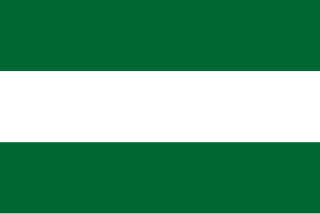
The Durrani Empire, or the Afghan Empire, also known as the Sadozai Kingdom, was an Afghan empire founded by the Durrani tribe of Pashtuns under Ahmad Shah Durrani in 1747, which spanned parts of Central Asia, the Iranian plateau, and the Indian subcontinent. At its peak, it ruled over present-day Afghanistan, much of Pakistan, parts of northeastern and southeastern Iran, eastern Turkmenistan, and northwestern India. Next to the Ottoman Empire, the Durrani Empire is considered to be among the most significant Islamic empires of the second half of the 18th century.

European influence in Afghanistan has been present in the country since the Victorian era, when the competing imperial powers of Britain and Russia contested for control over Afghanistan as part of the Great Game.
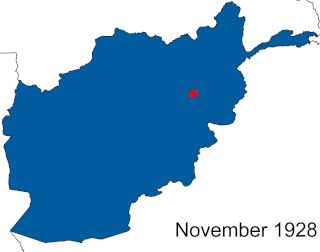
The Afghan Civil War was fought from 14 November 1928 to 13 October 1929. Rebelling, and subsequently governing Saqqawist (Saqāwīhā) forces under Habibullāh Kalakāni fought against various opposing tribes and rival monarchs in the Kingdom of Afghanistan, among whom Mohammed Nādir Khān eventually achieved a preponderant role. Despite early successes, such as the capture of Kabul and defeat of Amanullah Khan on 17 January 1929 or the capture of Kandahar on 3 June, the Saqqawists were eventually deposed by anti-Saqqawist forces led by Nadir on 13 October 1929, leading to Nadir's ascension as King of Afghanistan, who ruled until his assassination on 3 November 1933.

Ghazi Amanullah Khan was the sovereign of Afghanistan from 1919, first as Emir and after 1926 as King, until his abdication in 1929. After the end of the Third Anglo-Afghan War in August 1919, Afghanistan was able to relinquish its protected state status to proclaim independence and pursue an independent foreign policy free from the influence of the United Kingdom.
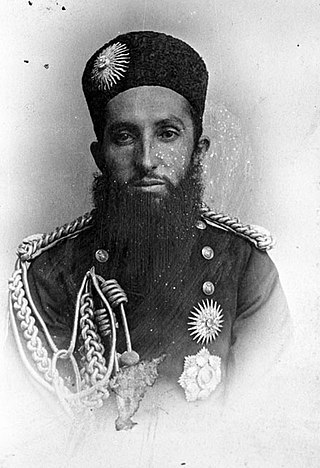
Nasrullah Khan, (1874–1920), sometimes spelt as Nasr Ullah Khan, was shahzada of Afghanistan and second son of Emir Abdur Rahman Khan. He held the throne of Afghanistan as Emir for one week, from 21 to 28 February 1919.

Mohammadzai, also spelled Moḥammadzay, is a Pashtun sub-tribe or clan of the Barakzai which is part of the Durrani confederacy of tribes. They are primarily centered on Kandahar, Kabul and Ghazni in Afghanistan as well as in the city of Charsadda in neighbouring Pakistan. The Mohammadzai ruled Afghanistan from 1823 to 1978, for a total of 155 years. Their rule ended under Daoud Khan when the Communists took power via a Soviet-backed coup.

Habibullah Kalakani, derided by the Pashtuns as "Bacha-ye Saqao", was the ruler of Afghanistan from 17 January to 13 October 1929, as well as a leader of the Saqqawists. During the Afghan Civil War (1928–1929), he captured vast swathes of Afghanistan and ruled Kabul during what is known in Afghan historiography as the "Saqqawist period". He was an ethnic Tajik. No country recognized Kalakani as ruler of Afghanistan.

Alakozai is a Pashtun tribe in Afghanistan. They are one of the four tribes of the Zirak tribal confederacy of Durrani Pashtuns.
The following lists events that happened during 1919 in Afghanistan.
The following lists events that happened during 1930 in Afghanistan.
The following lists events that happened during 1928 in Afghanistan.
The following lists events that happened during 1933 in Afghanistan.
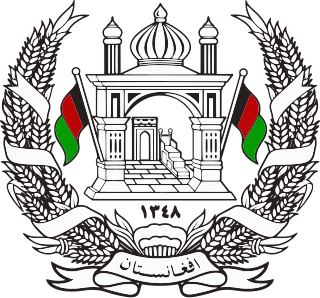
The Barakzai dynasty, also known as the Muhammadzai dynasty, ruled what is now Afghanistan from 1823 to 1978, when the monarchy ended de jure under Musahiban Mohammad Zahir Shah and de facto under his cousin Sardar Mohammad Daoud Khan. The Barakzai dynasty was established by Dost Mohammad Khan after the Durrani dynasty of Ahmad Shah Durrani was removed from power. As the Pahlavi era in Iran, the Muhammadzai era was known for its progressivist modernity, practice of Sufism, peaceful security and neutrality, in which Afghanistan was referred to as the "Switzerland of Asia".
Mohammad Gul Khan Momand, was both a literary figure and a politician in Afghanistan. He also served as an Army Officer during Afghanistan's Independence war in 1919. He served numerous Government and Leadership positions including Home Minister of Afghanistan.

Mohammad Nadir Shah was King of Afghanistan from 15 October 1929 until his assassination in November 1933. Previously, he served as Minister of War, Afghan Ambassador to France, and as a general in the Royal Afghan Army. He and his son Mohammad Zahir Shah, who succeeded him, are part of the Musahiban.

Bārakzai is the name of a Pashtun tribe from present-day Kandahar, Afghanistan. '"Barakzai" is a common name among the Pashtuns and it means "son of Barak" in Pashto. According to the Encyclopædia Iranica, "In the detailed Pashtun genealogies there are no fewer than seven instances of the ethnic name Bārakzī, at very different levels of tribal segmentation. Six of them designate simple lineages within six different tribes located in the Solaymān mountains or adjacent lands... The seventh instance, on the other hand, designates one of the most important Pashtun tribes in numbers and historic role, part of the Zīrak branch of the Dorrānay confederation.
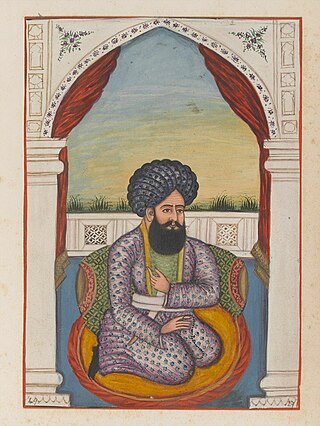
Sultan Mohammad Khan, also known as Ghazi Sardar Sultan Mohammad Talaei, and known by his epithet, Sultan Mohammad Khan the Golden was an Afghan chief minister and regent. He was a powerful brother of Emir Dost Mohammad Khan, the eventual ruler of Afghanistan who seized control of Kabul from him. Prior to and during the reign of Dost Mohammad Khan, Sultan Muhammad Khan Telai was chief minister and governor of various regions of Afghanistan, including Kabul, Peshawar and Kohat. He was the first of the Musahiban, a Mohammadzai dynasty that began with him and ruled Afghanistan for more than 150 years, in various forms such as emir, king or president from 1823 to 1978.

Amir Ali Ahmad Khan, Shaghasi was an Afghan king from the Shaghasi family of the Barakzai tribe who was declared king of Afghanistan twice in 1929. He was first declared amir of Afghanistan by an influential cleric, Naqib Sahib on 20 January 1929, in eastern Afghanistan, but was defeated by Kalakani at Jagdalak on 19 February 1929. He was also declared as the amir of Afghanistan for the second time on 23 June 1929 in Kandahar, Afghanistan, by another highly influential Mufti Abd. Wasi Kandahari, but was defeated and captured by Kalakani on 3 July 1929.
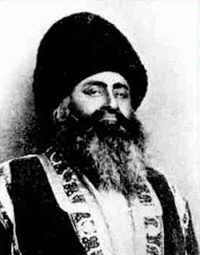
The Shaghasi are, alongside the Seraj and Telai, a prominent and powerful cadet-branch of the Afghan royal family. They belong to the Zirak branch of the Durrani confederacy, and are primarily centered around Kandahar. They can also be found in other provinces throughout central Afghanistan.

Ghazi Mir Zaman Khan, who became known as Loy Khan Ghazi Mir Zaman Khan Kunari was a Royal Afghan Army General and War Hero of the Afghan War of Independence who fought for Pashtun freedom against the British Empire. He is regarded as a National Hero in Afghanistan.